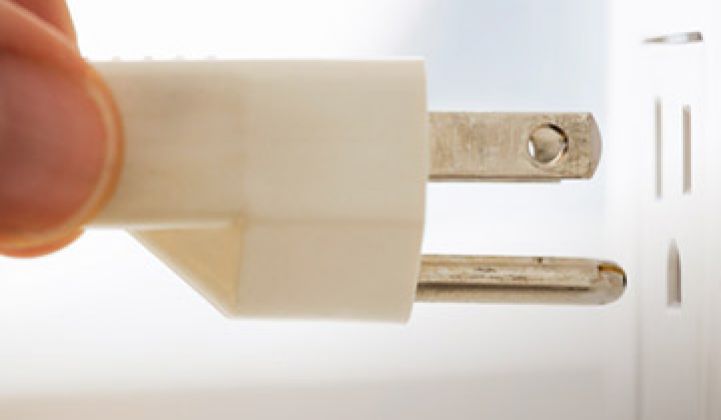This week has seen three big wins for energy efficiency, all of which have slipped largely under the radar.
First, Ohio ratepayers have reaped huge benefits from FirstEnergy bidding efficiency into the most recent PJM capacity auction, netting an expected $28 million over the four-year period where payments are available.
Next, the American Council for an Energy-Efficient Economy released a new analysis finding that energy efficiency could save $4.2 billion in energy costs while creating $3 billion in economic output.
Last, but certainly not least, the American Gas Associated found that more than 40 gigawatts of combined heat-and-power (CHP) potential has a payback of less than ten years.
Ohio saves big bucks
Ohio ratepayers and regulators knew that statewide energy efficiency programs had to be cost-effective to be enacted, which is accomplished by paying off the capital investments through reduced energy consumption. A pleasant bonus, according to exclusive analysis from Sierra Club, is that First Energy’s efficiency credits, totaling around 165 megawatts, have yielded new revenues of about $6.9 million per year for four years.
This contributes to offsetting program costs beyond the $4 these investments saved to every $1 spent. As Daniel Sawmiller, Senior Campaign Representative at the Sierra Club, explained, “This auction turns energy efficiency into a commodity that can be bought and sold like other forms of energy. It’s a clean and inexpensive energy resource that creates downward pressure on electricity prices for everybody. We should be doing everything we can to maximize our energy efficiency and promote the lower prices and economic growth that go with it.”
Efficiency directly saves consumers money on their monthly bills when they use less energy, but also indirectly with lower clearing prices in the capacity auction. Capacity auctions are less obvious, but equally important.
Capacity auctions ensure that resources are reliably procured three years in advance of when they are needed. To secure this capacity, the system operator holds auctions where the clearing price for all resources is set by the most expensive marginal unit required to meet demand. In other words, all resources get paid the price to run the most expensive generator needed. In this scheme, energy efficiency applies downward pressure to overall prices by reducing demand. This may mean, for example, that since less electricity is needed, a more expensive peaking natural gas plant does not have to come on-line. Because consumers ultimately pay these capacity payments through their rates, lower cost generation also equates to cheaper bills in the long run.
This process will help Ohio meet its strong energy efficiency standards for the state, which are projected to save $5.6 billion between now and 2020.
Louisiana's massive efficiency potential
On state-level energy efficiency standards, new analysis from the American Council for an Energy Efficiency Economy found that a combination of building energy codes, an energy efficiency portfolio standard, and CHP can save Louisiana $4.2 billion in electricity bills over the life of the investments.
Enacting these policies would also spur $3 billion in additional economic output, which would include $1 billion in wage increases and $663 million in new incomes to small business owners, plus $114 million in state and local tax revenue. The jobs picture is also strong; the report finds that these measures would create 27,100 person-years in employment, most of which would be local. Installation of cost-effective combined heat and power is a big part of the answer in Louisiana, with projections of 600 megawatts by 2020 and 1,500 megawatts by 2030. This includes industrial, on-site CHP and utilities investing in projects that they would partially own.
America's CHP potential
Louisiana is not the only place that could benefit from increased CHP investment. An excellent new report from the American Gas Association found that if capital cost incentives were employed -- such as the ones in New York and Maryland -- 39 states (including Louisiana) would have a combined 37,878 megawatts of CHP potential, with paybacks on those projects in the five- to ten-year range.
This would be very close to the 40 gigawatts of new CHP that Obama called for by 2020 in his recent Executive Order. The total potential across the United States, including projects that have a payback of more than ten years, expands to 123,303 megawatts. These payback periods lessen considerably in the scenarios that examine higher natural gas or electricity prices.
***
Adam James is a Research Assistant for Energy Policy at the Center for American Progress and the Executive Director of the Clean Energy Leadership Institute. You can email him at [email protected] and follow him on Twitter @adam_s_james.



